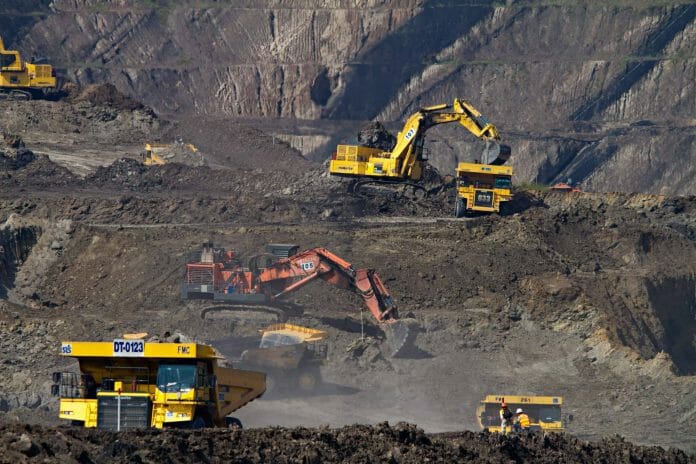By Farhan Kamarulzaman
Although the mining and quarrying industry is among the worst performers in term of the recent second quarter (2Q20) gross domestic product (GDP) result with a negative growth of 44.5 percent, yet in terms of size, it contributes a significant 7.2 percent share of GDP which means the focus now should be on how to assist this sector in raising its performance.
The 2Q20 GDP result showed the sector is the second-worst performing, and this requires an analysis of its dismal performance as part of seeking for specific measures to revive the industry.
First, we need to identify the challenges faced by the sector in the context of being hit by the Covid-19 pandemic. Like all other sectors, the decline in performance was due to a massive hit on economic activity from the strict curbs on movement and businesses imposed by the government to control the spread of the virus.
For example, Malaysia Smelting Corporation Bhd (MSC) recorded lower earnings mainly due to lower contribution from both the tin smelting and mining segments of the company, which were affected by global trade disruption during the Covid-19 pandemic.
The enforcement of several phases of the movement control order (MCO) at that time inhibited some of the economic activities, including part of the growth factors of the sector such as the mining process, the labour issue, the transportation phase and also global trade.
Also, the lacklustre performance in natural gas and crude, and condensate since last year contributed significantly to the sector’s contraction.
The Covid-19 pandemic undoubtedly worsened the situation as it affected both the supply of minerals and metals and their demand. On the demand side, the closing of factories during the heat of the pandemic in China and other related countries resulted in a decline in order and the price of most metals and minerals.
While on the supply side, most mines were either shut down or operated at limited capacity during the second quarter like the Australian rare-earths mining company Lynas, which halted operations at its Malaysian factory.
This vital sector, therefore, needs adequate assistance to improve its performance to provide the country with great alternative sources of revenue potential.
Besides, the mining companies will consider the need for tight cash flow control, cost reduction, and business continuity strategies designed to minimise any potential supply chain disruption risks.
Undeniably, the mining and quarrying industry has always been acknowledged worldwide as the basis for the design and development of various innovative structures, infrastructures and amenities aimed at improving the global society.
It is also essential as the vital catalyst and component of any country worldwide striving for developed, high-income, and industrialised nation status.
On the employment side, Shamsul Anuar Nasarah, Minister of Energy and Natural Resources has mentioned that the industry has created some 15,275 jobs, of which 83.57 percent or 12,766 are locals.
And perhaps successful measures to revitalise the sector would also be part of reducing Malaysia’s high unemployment rate.
The sector’s share of GDP has been consistent at 7.1 percent to GDP since Q1Y20, which shows that it consistently plays a part in the national economy. That is why the sector should remain one of the key contributors to economic growth.
The fall in global oil prices has acted as a dampener in reviving the sector to its former glory. And the widening budget deficit once again exposed the country to potentially dire economic consequences stemming from its undue reliance on oil sources revenue to fund its annual budget.
As in Nigeria, a significant funding gap, the inadequacy of efficient power and transportation facilities, and security issues are some of the critical problems leading to the poor development of the mining and quarrying industry.
The issues in Malaysia might be the same, but it may also be different depending on the sector types, either mining or quarrying sector. But there is a study by Universiti Teknologi Malaysia that proved the significant problems of the quarry sector are the burdensome enforcement, opposition of residents, limitation of technology, resources and accessibility, financial and security issues.
The study also suggested that the companies should be in charge of renewing their quarry licenses and be more vigilant of their expiry date. And the government should have a proper forest reserves development plan, and analyse the sector’s environmental impact.
Besides, proper authorities such as Ministry of Water, Land and Natural Resources and the Mineral and Geoscience Department should extensively revise the laws and policies covering around the mining and quarrying activities to mitigate the difficulties faced in its implementation towards successful mineral resource sustainability for Malaysia.
Coordinated and aligned policies and regulations with contributions from all stakeholders would also be excellent to ensure that the mining and quarrying sector attains its full potential.
Since several major productive sectors of the economy also depend on the mining and quarrying industry’s activities and production, any problems within the industry should be addressed to provide a better overview of our next economic performance.
Farhan Kamarulzaman is a Research Assistant at EMIR Research, an independent think tank focused on strategic policy recommendations based on rigorous research.









